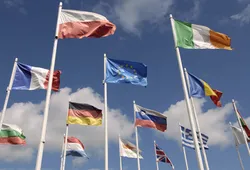See also: Surnames

Typically, family historians seek all the ancestors of a single person or all the descendants of a single person, or some combination. By contrast, a One-Name Study seeks out all of the holders of a single surname, usually around the world. If the study is confined to a country or a region, it is better called a surname study.
Occasionally, while researching a family, you may encounter more than one person with the same combination of given and family name in the same area at the same time, or who immigrated at the same time from the same country. You must then solve the puzzle of which is yours and which is/are not. Sometimes this involves constructing family trees for all similar individuals. For many, this is where genealogy gets interesting!
Have you ever been stuck on a problem of what might have happened to a sibling of one of your ancestors and/or tried to figure out where you might have cousins who can help you with your own origins? You might need to look worldwide for people with the same name and vintage, leading you back to the paragraph above.
Both of these scenarios are found regularly in One-Name Studies and surname studies.
Why might someone conduct a one-name study?Why might someone conduct a one-name study?
There are many potential reasons, including:
- In attempting to break down a ‘brick wall’ as outlined above, you may have gathered a lot of data already and decide you’re already on the way.
- It’s a great way to use and even enhance your genealogy skills.
- Particularly if you intend to publish your results, it’s a great way to give back to the community.
- You are fascinated by a particular surname and want to seek out its origins, and/or even become the world authority on that name.
Before beginning a one-name study it is essential to consider its potential size and consider how much effort might be required (see link below) and what the benefits may be. For example, some societies use patronymic surnames, which are derived from a father’s given name. In such societies the surname changes every generation and is thus much less amenable to study.
What’s involved in a one-name study?What’s involved in a one-name study?

The Guild of One-Name Studies (a British charity with worldwide membership) describes seven different processes involved in a one-name study.
Collect – gather and organize data on the chosen nameCollect – gather and organize data on the chosen name
One might begin by focusing on a familiar geographic region. Sources will be reports of civil registration, church records, censuses, land and tax records, probate and other estate records, military service and pension records, newspapers, grave markers, passenger lists, government reports, and so on. What is available will depend upon the time period and the geographic area. It may or may not be online.
Frequently, one will save time by subscribing to an online data aggregator like MyHeritage, letting them do much of the hard work of finding sources. Sometimes one might visit a particular church, graveyard, courthouse, or record office to find information that cannot be found elsewhere.
Analyze – can multiple pieces of data be linked to the same person?Analyze – can multiple pieces of data be linked to the same person?
Would it make sense to reconstruct families by linking individuals together? Are there missing data elements compared with what is expected? Are there multiple spellings of the name that might have been missed? Are these genuinely different names, variations of each other, or merely mistranscriptions? Would it help to have a DNA project? What kinds of DNA tests will solve a particular problem?
Synthesize – what does all the above mean?Synthesize – what does all the above mean?
Is the data pointing toward a single origin for the surname? What is the surname’s origin and/or meaning? Where are surname holders now? When and how did they get there? Are there longevity/mortality patterns? Sometimes it’s worth pausing to evaluate progress so far and/or whether there might be a better way to proceed.
Communicate – ask others for help and/or respond to inquiriesCommunicate – ask others for help and/or respond to inquiries
Is the study of such a size that it might need a team to finish it? Has someone already worked on the surname in a certain area? Are they open to collaboration? Are there additional skills needed? For example, does the researcher need to learn Latin or a foreign language or develop paleography skills to read old documents, or find someone else with those skills?
Publicize – show what has been donePublicize – show what has been done
Putting study results online, particularly reconstructed families, can help other people find the study. They might benefit from it and offer help to correct errors and/or add more information, such as photographs or certificates. Are there interesting stories emerging from the study that might themselves be worth sharing via a blog site? Could a newsletter of a social media page interest other researchers?
Publish – leave a permanent recordPublish – leave a permanent record
How and where are important questions to consider. Could the findings justify writing a book, or multiple articles for a family history magazine?
Preserve – ensure that the study remains available for as long as is feasiblePreserve – ensure that the study remains available for as long as is feasible
Short-term: are there adequate backups in case of misfortune? Medium to long-term: is there somewhere where the work can be permanently lodged? Is there someone who can continue the Study?
You don’t have to do them all. Neither do you have to do them in order! How and where you start will depend on your chosen surname, frequency and distribution, and inclinations. Just do it!
Explore more about one-name studiesExplore more about one-name studies
- Are You a GOON? What Is a One-Name Study and Why Do One? webinar by Kirsty Gray on Legacy Family Tree Webinars
- Surname Projects and DNA Projects, webinar by Mags Gaulden on Legacy Family Tree Webinars
- Guild of One-Name Studies
- Advice for considering starting a study
- 400 sample surname websites
- Surname Society

